Photoacoustic Technique Can Detect Gases in Minute Amounts
source:photonics
release:Nick
keywords: Photoacoustic Technique
Time:2017-08-07
Using a novel variation on the photoacoustic effect, scientists have demonstrated a way to detect trace gases down to concentrations at the parts-per-quadrillion level.
Photoacoustic detectors work by zapping a material with a laser tuned to a wavelength that is absorbed by the molecule of interest. For example, to look for ammonia in air, the laser would be tuned to the specific absorption frequency of ammonia molecules. But the smaller the concentration of the target substance, the quieter the signal. Researchers at Brown University have developed a technique to boost the signal amplitude.
“What we’ve done is devise a method that relies on three different resonances,” professor Gerald Diebold said. “The signal gets bigger with each resonance.”
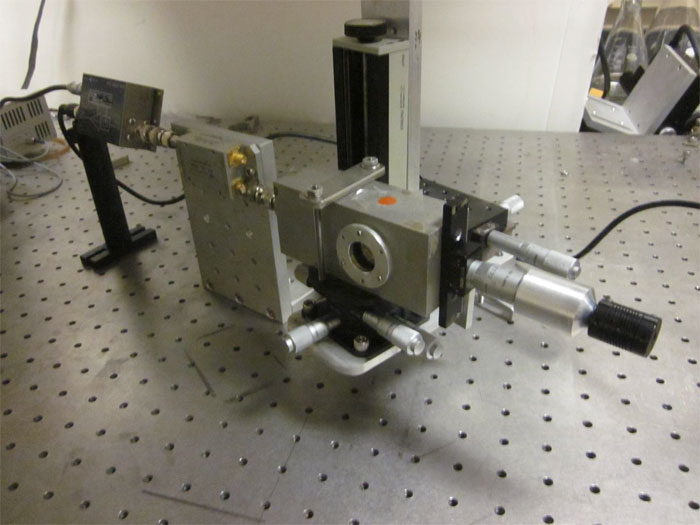
Using a new technique a device can detect gases, such as environmental pollutants, in extremely minute concentrations. Courtesy of Gerald Diebold.
The researchers used two frequency-shifted beams from a CO2 laser directed at an angle to each other to create optical fringes that moved at the sound speed in a cavity with a longitudinal resonance. The photoacoustic signal was detected with a high-QQ, piezoelectric crystal with a resonance on the order of 443443 kHz.
The design of the photoacoustic cell was analogous to a hemispherical laser resonator and could be adjusted to have a longitudinal resonance to match that of the detector crystal. The frequencies of the grating, the length of the resonator, and the crystal needed to match in order for all three resonances to be used. In experiments, the researchers showed that by using all three resonances, it was possible to detect sulfur hexafluoride in amounts down to the parts per quadrillion.
The study was a collaboration between Diebold’s lab and the lab of professor Fapeng Yu at Shandong University.
“One of the reasons that the moving grating method worked so well is that Professor Yu’s group at Shandong University grew a special crystal that gives very large signals in response to the pressure waves,” Diebold said. “We were told that it took them three months to synthesize the crystal.”
According to Diebold, when carrying out the experiments, the researchers were “amazed to find that because the frequencies are so high — in the hundreds of kilohertz range — there is virtually no background interference, either from electrical sources or from acoustic from room noise, wind or vibrations of a building.
“That means we can do experiments in an open cavity without having to block outside noise. So if you have a landfill and you’re trying to detect methane, for example, you just take this detector, sit it there in open air and continuously monitor the output.”
Diebold believes the technique will be useful in developing detectors that are sensitive to very low pollutant gas concentrations, and for detecting molecules with weak absorptions that make them inherently difficult to detect.
There remains some work on engineering a compact instrument before this technique can be used outdoors, but this study offers a convincing proof of concept, the researchers say.
Photoacoustic detectors work by zapping a material with a laser tuned to a wavelength that is absorbed by the molecule of interest. For example, to look for ammonia in air, the laser would be tuned to the specific absorption frequency of ammonia molecules. But the smaller the concentration of the target substance, the quieter the signal. Researchers at Brown University have developed a technique to boost the signal amplitude.
“What we’ve done is devise a method that relies on three different resonances,” professor Gerald Diebold said. “The signal gets bigger with each resonance.”

Using a new technique a device can detect gases, such as environmental pollutants, in extremely minute concentrations. Courtesy of Gerald Diebold.
The researchers used two frequency-shifted beams from a CO2 laser directed at an angle to each other to create optical fringes that moved at the sound speed in a cavity with a longitudinal resonance. The photoacoustic signal was detected with a high-QQ, piezoelectric crystal with a resonance on the order of 443443 kHz.
The design of the photoacoustic cell was analogous to a hemispherical laser resonator and could be adjusted to have a longitudinal resonance to match that of the detector crystal. The frequencies of the grating, the length of the resonator, and the crystal needed to match in order for all three resonances to be used. In experiments, the researchers showed that by using all three resonances, it was possible to detect sulfur hexafluoride in amounts down to the parts per quadrillion.
The study was a collaboration between Diebold’s lab and the lab of professor Fapeng Yu at Shandong University.
“One of the reasons that the moving grating method worked so well is that Professor Yu’s group at Shandong University grew a special crystal that gives very large signals in response to the pressure waves,” Diebold said. “We were told that it took them three months to synthesize the crystal.”
According to Diebold, when carrying out the experiments, the researchers were “amazed to find that because the frequencies are so high — in the hundreds of kilohertz range — there is virtually no background interference, either from electrical sources or from acoustic from room noise, wind or vibrations of a building.
“That means we can do experiments in an open cavity without having to block outside noise. So if you have a landfill and you’re trying to detect methane, for example, you just take this detector, sit it there in open air and continuously monitor the output.”
Diebold believes the technique will be useful in developing detectors that are sensitive to very low pollutant gas concentrations, and for detecting molecules with weak absorptions that make them inherently difficult to detect.
There remains some work on engineering a compact instrument before this technique can be used outdoors, but this study offers a convincing proof of concept, the researchers say.
MOST READ
- RoboSense is to Produce the First Chinese Multi-beam LiDAR
- China is to Accelerate the Development of Laser Hardening Application
- Han’s Laser Buys Canadian Fiber Specialist CorActive
- SPI Lasers continues it expansion in China, appointing a dedicated Sales Director
- Laser Coating Removal Robot for Aircraft
PRODUCTS
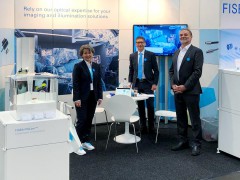 FISBA exhibits Customized Solutions for Minimally Invasive Medical Endoscopic Devices at COMPAMED in
FISBA exhibits Customized Solutions for Minimally Invasive Medical Endoscopic Devices at COMPAMED in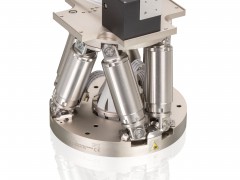 New Active Alignment System for the Coupling of Photonic Structures to Fiber Arrays
New Active Alignment System for the Coupling of Photonic Structures to Fiber Arrays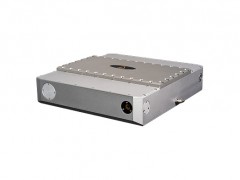 A new industrial compression module by Amplitude
A new industrial compression module by Amplitude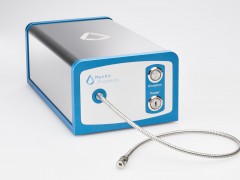 Menhir Photonics Introduces the MENHIR-1550 The Industry's First Turnkey Femtosecond Laser of
Menhir Photonics Introduces the MENHIR-1550 The Industry's First Turnkey Femtosecond Laser of Shenzhen DNE Laser introduced new generation D-FAST cutting machine (12000 W)
more>>
Shenzhen DNE Laser introduced new generation D-FAST cutting machine (12000 W)
more>>
